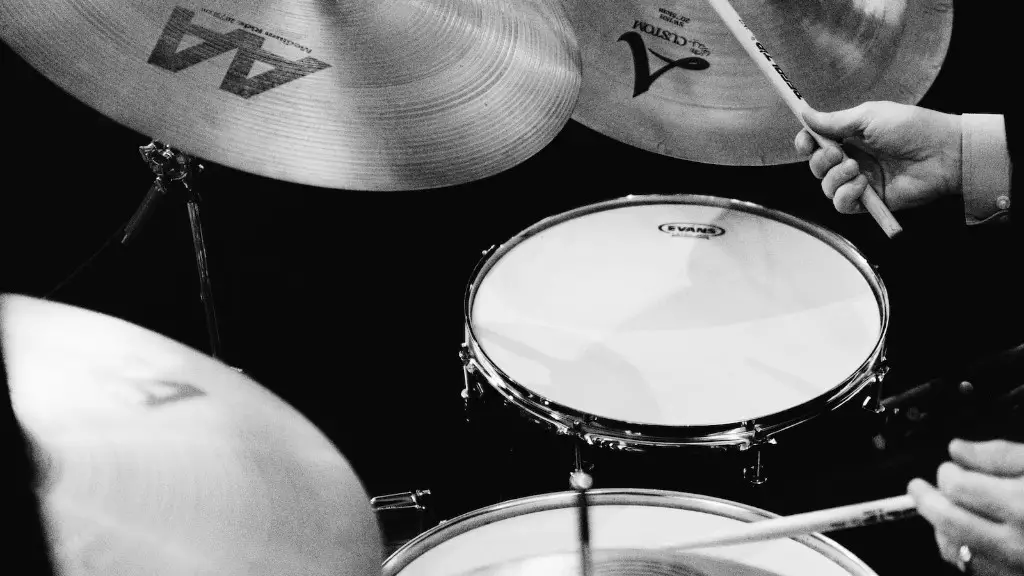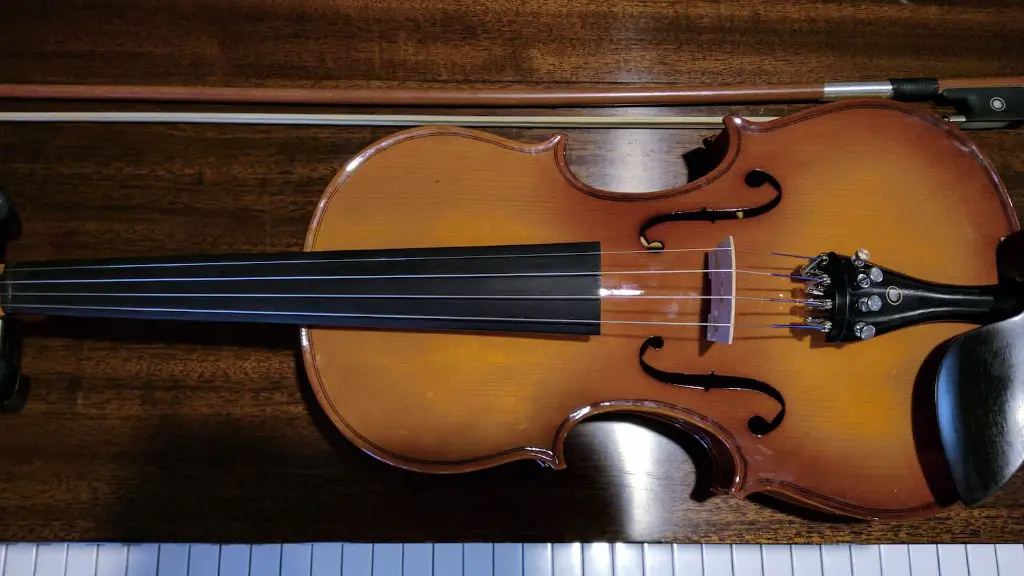Playing the drums with a metronome can be a great way to improve your timing and accuracy.
It’s important to understand how to use a metronome correctly in order to get the most benefit out of it. Here are some tips on how to get started:
1. Start by setting the tempo of the metronome at a comfortable speed.
2. Begin by counting aloud to yourself, then start playing along with the metronome.
3. Make sure you are playing in time with the beat of the metronome.
4. Increase or decrease the tempo as needed to challenge yourself and improve your timing.
5. Practice regularly and experiment with different rhythms and tempos.
By following these steps, you’ll be able to quickly master playing drums with a metronome.
Setting Up A Metronome For Drumming
Drumming with a metronome is an essential skill for any drummer to develop. It helps drummers stay on time and play in sync with other instruments. To get started, you’ll need to set up your metronome correctly. Here are the steps for setting up a metronome for drumming:
1. Start by selecting a tempo. Most metronomes will have a dial or button that allows you to select the beats per minute (BPM). Choose a tempo that’s comfortable for you to play at and gradually increase it as you get more comfortable playing with the metronome.
2. Next, adjust the volume of the beat to match your own playing volume. You’ll want it to be loud enough so you can hear it but not so loud that it drowns out your own playing.
3. If your metronome has subdivisions (like quarter notes, 8th notes, 16th notes), make sure to select the right one depending on what kind of beat you’re playing. This will help keep your timing accurate and make playing with the metronome easier.
4. Finally, start by playing along with just one hand or foot at a time before trying both together. This will help build up accuracy and give you an idea of how the beat should sound when everything is in sync with the
Matching the Tempo of the Metronome
Playing drums with a metronome is an essential skill for any drummer. It helps to keep your rhythm consistent and make sure that you are playing in time with other musicians. In order to match the tempo of a metronome, you will need to start by setting the tempo to a comfortable speed. Once you have selected a tempo, listen closely and play each beat of your drum pattern in time with the metronome. As you get more comfortable, try speeding up or slowing down your playing to match the tempo of the metronome.
For more precise timing, use your foot to tap along with the metronome while counting out loud. This will help you stay in time and get used to playing at different tempos. You should also practice playing at different dynamic levels, as this will allow you to adjust your playing for different styles of music. Finally, make sure that your drum strokes are precise and consistent so that they sound great no matter what tempo you’re playing at. With enough practice, you’ll soon be able to match any tempo with ease!
Practicing Drum Beats to a Metronome
Practicing drum beats to a metronome is essential for all drummers. It helps you keep time and develop a better sense of rhythm. When playing with a metronome, the drummer should first set the beat at a comfortable speed, starting slow and gradually increasing the tempo as their skills improve. The key is to stay consistent and focused, counting each beat aloud as you play. You can also use accents to create variations in your playing, emphasizing certain beats while maintaining the overall tempo. As you become more comfortable, try playing different rhythms or patterns against the metronome. This will help you develop coordination, timing and control over your drumming technique. Once you have mastered basic techniques, you can use the metronome to practice more complex drum beats or fills.
By regularly practicing with a metronome, you can become an excellent drummer with great timing and accuracy. The best way to begin is by setting a comfortable practice pace and counting aloud as you play along. With patience and dedication, even novice drummers can learn to play perfectly in time with a metronome!
Incorporating Variations in Playing to the Beat of a Metronome
Drumming to a metronome is one of the most important skills any drummer must learn. It helps to build a strong sense of time, enabling the drummer to stay on beat during live performances and studio recordings. Playing with variations while maintaining the metronome beat is a great way to add dynamic and interest to your drumming.
This technique can be achieved by altering your playing with accents or ghost notes, or by varying your rhythm. Start by playing simple beats, such as 8th or 16th notes, on different drums or cymbals. Once you get used to playing with the metronome, try adding subtle variations in dynamics and rhythmic accents. This can be done by playing louder on certain beats, introducing ghost notes between beats or adding additional fills between phrases.
Another way to practice incorporating variations into your playing is by using subdivisions of the beat. For example, if you are using an 8th note beat at 120 bpm (beats per minute), you can divide it into 4ths (240 bpm) or 16ths (480 bpm). This will help you become more comfortable with higher tempos and add more complexity to your playing.
When practicing with a metronome, take it slow and be patient. Gradually build up speed as you become more familiar with how each variation feels against the metronome beat. With enough practice, you’ll be able to incorporate
Playing Drum Fills to a Steady Beat
Playing drum fills to a steady beat can be a challenging but rewarding experience for any drummer. It requires a good sense of rhythm, timing, and coordination. To play drum fills with a metronome, start by setting the tempo that you would like to play at. Then practice playing your drum fill with the metronome on every beat or every other beat until you can accurately hit the fill at the desired tempo.
Next, consider how many beats you want your fill to last for and adjust your playing accordingly. If you are playing for four beats, for example, make sure that the notes of your fill fit into the allotted time. Once your fill is comfortable at one tempo, try speeding it up and down in small increments until you are confident with it at all tempos.
In addition to practicing with a metronome, try playing along to songs as well. This will help you get accustomed to playing drum fills alongside music and in different time signatures. It is important to practice regularly in order to stay sharp and become more proficient. The more often you practice, the easier it will be to incorporate new fills into your repertoire.
Increasing Speed on the Drums Gradually
Drumming at faster speeds can be a daunting task. But with the use of a metronome, you can gradually increase your speed and master faster tempos. A metronome is a device used to set and maintain tempo during practice or performance. It helps drummers to keep their timing consistent, as well as providing an audible reference for increasing speed.
To get started, select a tempo that is comfortable for you to play at and set your metronome to this tempo. Practice playing along with the metronome until you feel confident in keeping time with it. Once you have mastered this tempo, increase the speed of your metronome by a few BPM (Beats Per Minute). Start by playing along with the metronome at this new speed and gradually build up your stamina and accuracy. As your skill level increases, gradually continue to increase the tempo of the metronome until you reach your desired speed.
By taking small steps towards increasing your speed, you’ll be able to improve your technique and confidence in no time! Additionally, break up long practice sessions into shorter intervals so that you don’t become overwhelmed or fatigued. With patience and dedication, you will soon be playing at blazing speeds!
To Sum it All Up
Playing drums with a metronome is an essential skill for any drummer. It helps to develop the necessary skills to stay in time and keep a steady beat. The first step is to set the metronome at a comfortable tempo and practice playing with it. Once you are feeling comfortable, gradually increase the tempo to challenge yourself. It is important to practice regularly and focus on accuracy, not speed. By mastering this skill, you will be able to play with other musicians and create great music. With patience and dedication, you can become an expert at playing drums with a metronome.




